A few of days ago I arrived in Vancouver, B.C. for a week of urban planning and playing. On the official schedule are presentations about leading practices in resilient urban systems, a workshop to assess the City of Vancouver’s rating in the International Ecocity Framework and Standards (IEFS) initiative, a brainstorming session to redesign the campus of the BCIT’s School of Construction and the Environment into an ecocity fractal, and a weekend retreat of the IEFS Core Advisory Committee discussing the IEFS on the road to Rio.
That’s quite a brainful of lofty concepts…
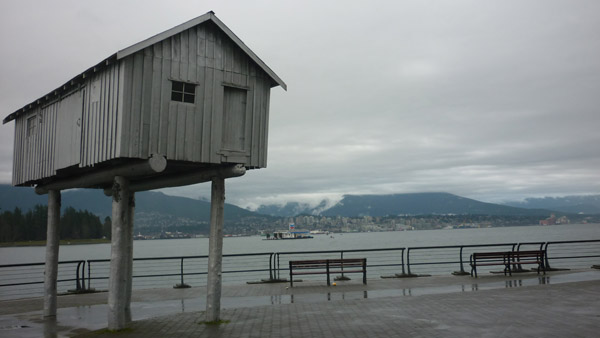
so let’s bring this down home…
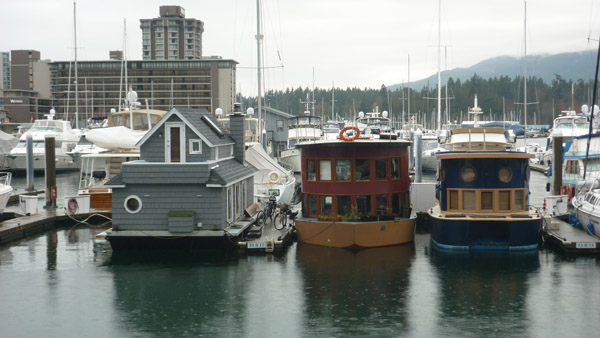
As the venerable Danish architect Jan Gehl, author of Cities for People, points out:
A good city is like a good party – people stay much longer than really necessary because they are enjoying themselves.
So let’s take a ride into Vancouver and see what there is to discover…

Tuesday, February 7th
You wanna have fun while you’re doing this.
-Richard Register
I arrived at Vancouver International in the late afternoon and I was hoping I’d be able to get to the place I had booked through airbnb.com with enough daylight left to catch a few initial impressions of this great Pacific Northwest metropolis. The connection would have to be pretty smooth for my plan to come through, and the city’s transit system did not disappoint. I hopped on the Canada Line of the skytrain and in less than 20 minutes I arrived at the Broadway station, from where it was a short walk through the Mount Pleasant neighborhood to get to my place.
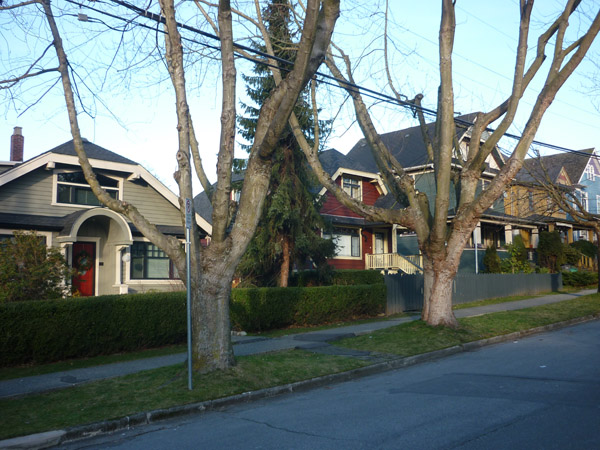
Vancouver has the reputation for being one of the greenest cities in North America, and from my view it was off to a great start. Not to read too much into it, but having a metro line go straight to the airport is imperative for any city worth its eco salt, and in my view it really sets the tone and intention of a place.
None of my “roommates” were home (but keys under a rock — I’m in Canada now), so I dropped off my stuff and started meandering down the hill toward those magnificent white caps in the distance.
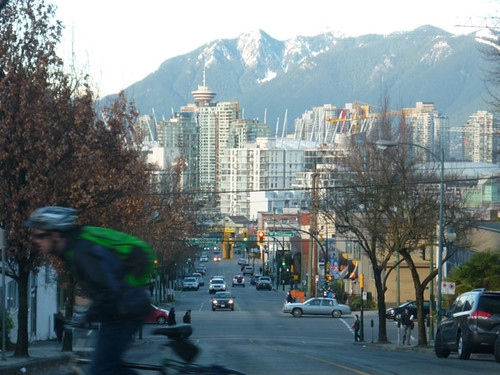
Yup, that’s a cyclist right there riding through the photo, and it immediately became clear when I had a hard time crossing the street for all the bikers that he wasn’t a lone wolf braving the British Columbia winter. Granted, it was a sunny day, but as I was about to find out less than 24 hours later, it takes more than pouring rain to get Vancouverites off their bicycles. In a town that seems to have more mountain climbing stores than McDonald’s you’d be hard-pressed to expect a little weather to keep the faithful from pedaling forth.
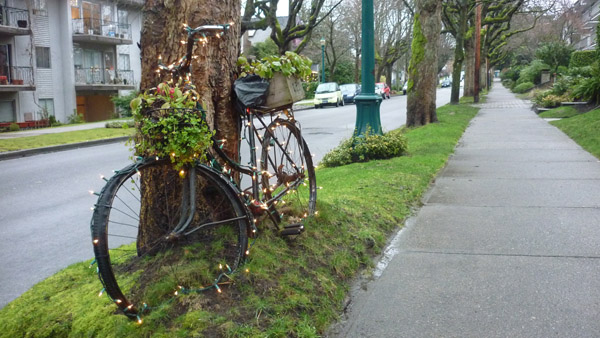
Alas, Vancouver is far from an urban utopia, and just a couple of blocks down from my idyllic home I would for the next few days run into the reality of who’s still boss in the fossil-fueled North American city.
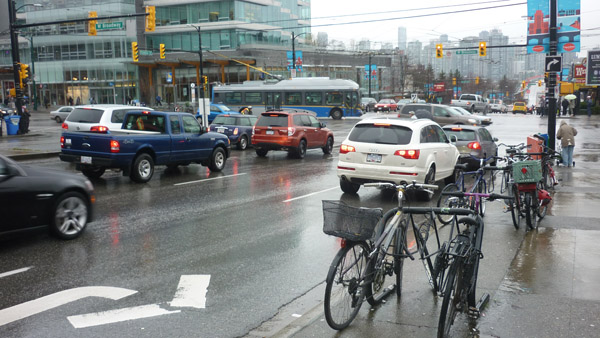
I went down Cambie Street toward the bridge that connects the south shore of False Creek where the Olympic village is located to the downtown peninsula. It’s where I got my first taste of Eco-Density, an initiative adopted by the City of Vancouver to use density, design, and land use to help reduce their carbon footprint and expand housing choices while keeping it one of the most livable cities in the world.

The idea of living in highrises may not be everyone’s dream, especially for Americans who are used to expansive spaces and long distances, but aside from the fact that these long distances between basic services and the massive amounts of energy it takes to sustain such a set-up are slowly dismantling the American dream, density, if done right, can actually be quite enriching. Brent Toderian, Vancouver’s former Director of Planning, aptly coins it The Power of Nearness, and a look across the bridge gives voice to the idea that living close together can be quite appealing if the setting is right.
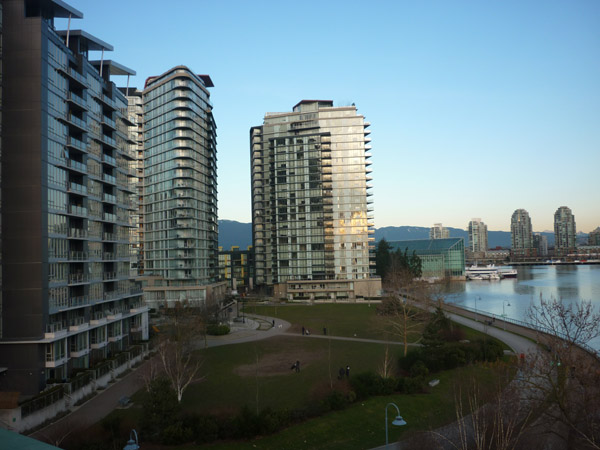
The image of people coming together, sharing space and resources, and enjoying the simplicity of walking and biking in a vibrant and verdant ecotropolis firmly ingrained in my mind, I hoofed it back to my makeshift abode on the pleasant mountain where I was greeted by a voluptuous full moon.
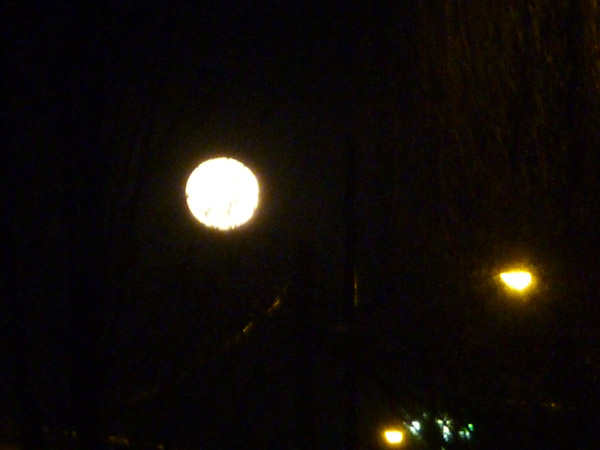
Wednesday, February 8th
The oldest task in human history is to live on a piece of land without spoiling it
– Aldo Leopold
I woke up to the sound of rain, and after a moment of perceived hardship my mind freed itself from the binary “good vs bad weather” constraints and fully embraced the prospects of a blissfully drizzly day. It did help to know that my destination was a talk by Richard Register entitled “Urban Sustainability: The Coming Transformation” to be held at the convention center on the waterfront. The walk through my neighborhood was luscious.
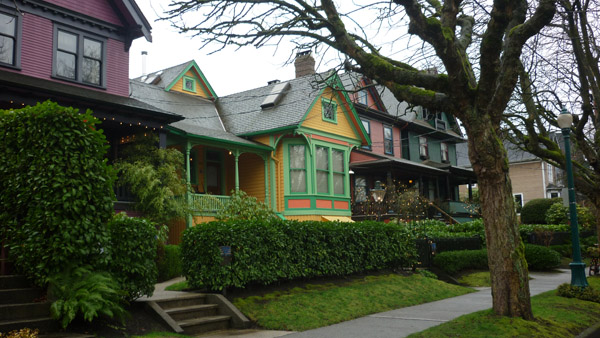
I hopped on the Canada line and in less than 10 minutes I was at the convention center where I was greeted by this little sign that gives a whole new meaning to the concept of greenwashing.

I’m just going to take the liberty here and skip ahead to equalize that sight with the most excellent SmartCar 2Go sighting I would have later that day.

I met Richard in the speaker room where we chatted for a bit and he introduced me to John Knott, the second speaker that day, a third-generation developer from the family that revitalized Baltimore’s Inner Harbor who has become well known for his sustainable developments of Dewees Island and Noisette in the Charlston, SC area.
As usual, Richards presentation was incisive yet delightfully improvisational, with lots of great visuals.

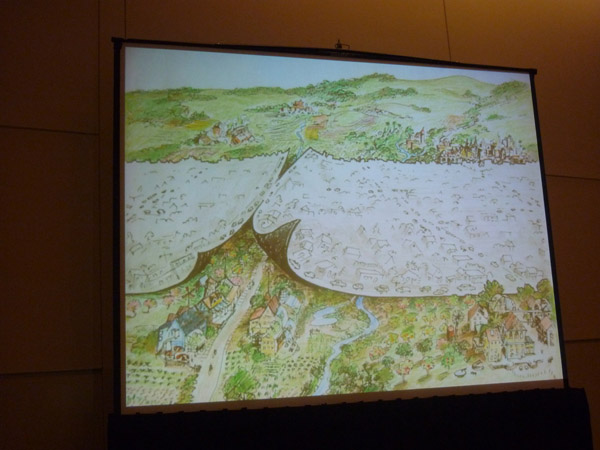
Richard said that if we want to get serious about fighting climate change we need to build ecologically healthy cities. Cities are the single largest things that humans build, inhabited by 60-80 percent of the world’s population, and if designed right could run on 1/10th of their current energy.
The cool thing about Richard is that he’s one of the few brainy thinker types who is also a great artist, so his presentations are always illustrated with his drawings and sketches.
This is what most cities look like right now…

People are condemned to narrow strips, with cars taking up most city space…

but if you start to shift toward density by adding more vertical space, connecting existing buildings, and taking space-guzzling cars out of the core you can create so much more space for people…

so despite the new density, and in fact because of it, you’re creating a more attractive and livable urban center…
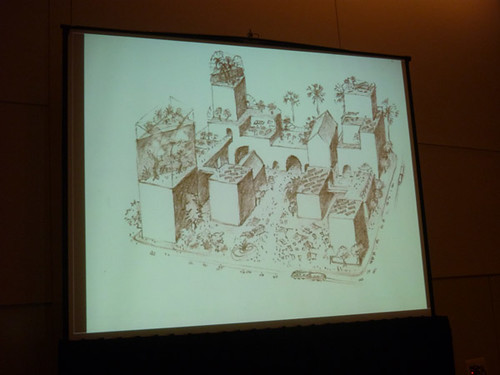
Of course, the question always arises, “can it be done?”
Let’s face it, the human mind gets terribly attached to its surrounding conditions, even or perhaps especially if those conditions are unhealthy and self-destructive. Even among many “environmentalists” Richard often gets belittled as a dreamer who doesn’t understand the reality of “how things are.” People would rather tinker around the edges, get a few solar panels, drive a hybrid car and build an “eco-friendly” home that allows them to continue their exact same lifestyle…

than to actually tackle the root of the problem which is that the planet can’t sustain the number of people on it with the current land use patterns of sprawl and disconnectedness.
It’s like we’re getting plastic surgery when what we really need is deep therapy.

The thing is, the change we need is not as hard and unattainable as we think it is. Richard likes to point out how quickly and easily American car manufacturers shifted towards building things other than cars with the threat of Nazi Germany looming over the world. I don’t believe for a minute these companies wouldn’t be able to shift toward building much-needed infrastructure for a post-carbon economy if they had the incentive. You thought Nazis were bad? Try rising sea levels and permanent drought.
The good news is that this is not just lofty theory or distant science fiction, but in fact much of it is combining ancient wisdom with modern, progressive advances. I wrote about how the City of Freiburg, Germany decided against all conventional wisdom to keep its medieval walkable core intact after WWII and is now reshaping its suburbs into eco villages. The City of Vancouver decided to adopt ecocity principles into its planning, and while far from an actual ecopolis, you can see the access by proximity principle reflected in its design.

But can it be done in the U.S., where people like it big and distant and will defend their constitutional (god-given?) right to sprawl, waste, and consume, consequences be damned?
Well, John Knott has proven that it can be done. In the second presentation of the day entitled “Urban Sustainability: The Future Is Local,” John told us how he and his team were able to turn the blighted 3,000 acre Noisette community in Charleston, South Carolina…
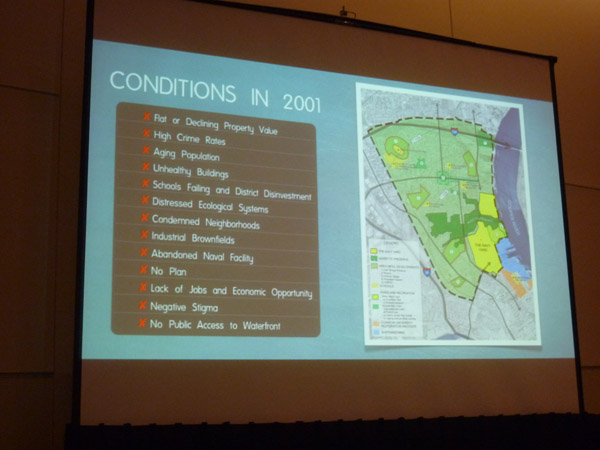
into a healthy, sustainable, human-scale community — a city within a city — within a few years.

I never thought I would hear a developer talk about human relationships, but that’s exactly how John explained his unprecedented success in getting buy-in from all the different parties — residents, the city, developers, planners, architects — involved in such a large scale change. He told the story of how he personally met with every resident, asking about their concerns, visions, worries, and dreams, and in turn told them about the rich history of the neighborhood.
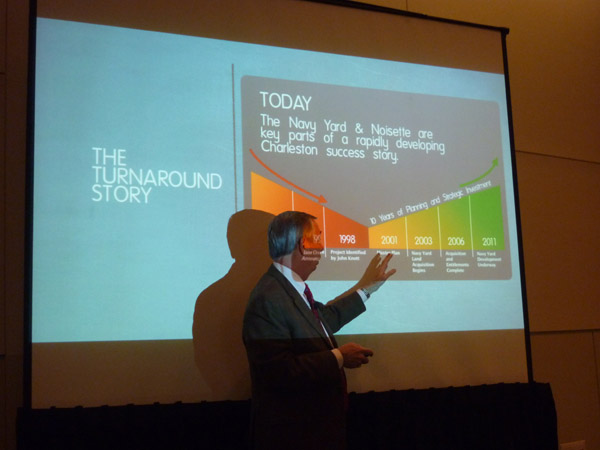
John is convinced that you cannot build an ecologically healthy city without community, and to build community we have to get to know each other first. To him, anonymity is one of the most serious problems in the U.S., and in many ways it’s the land use patterns of sprawl and distance that have created this anonymity. It follows then that the only way we can reverse these patterns successfully and gather the political, economic and spiritual courage to fundamentally reshape the spaces we live in is by connecting with those we share those spaces with, one by one, little by little.
As it turns out, building healthy and sustainable communities is much less about buildings as it is about the people who live in them. In order to build ecocities we need to have ecocitizens. Not surprisingly, ecocitizenship plays a huge role in the development of ecocity standards, as reflected in its socio-cultural indicators. The following day would see us working through some of the definitions of what that means and what kind of metrics could be used to measure how far a city has come in its ecocitizenry. I’ll talk more about it in Part II, but here’s a visual preview…
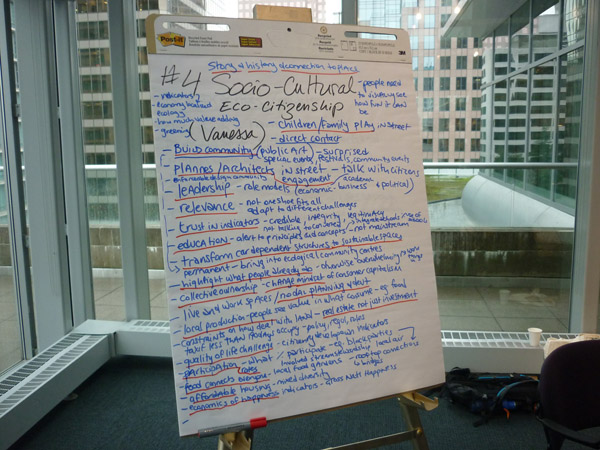
Filled to the brim with mental nutrients I decided to take a walk along the seawall, a 13.7 mile walking, jogging, cycling and inline skating path that lines Vancouver’s waterfront from the convention center to Kitsilano Beach Park.
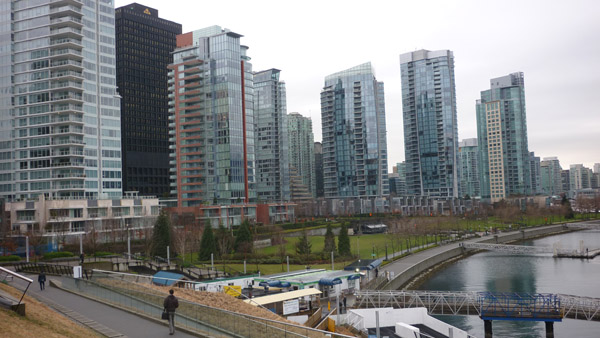
As I was strolling along, breathing in the misty winter air, I thought about spaces and how a well functioning urban organism wasn’t much different from a well-functioning human mind. When our mind is constantly chattering and every nook of our head space cluttered and congested, we have no room to see the spaces between that open the window for deeper reflection into our own consciousness. Likewise, when an urban space is sprawled out aimlessly and endlessly, there is neither room for reflection nor connection. As I looked up to my left, the dense but well designed building blocks reminded me of the mind’s yin — a brilliant idea, a creative outburst, a work of intense focus…

while the beautifully vast and naturally perfect bay on my right evoked a sense of the mind’s yang — a silent meditation, a sense of calm, an understanding that everything is just the way it’s supposed to be.
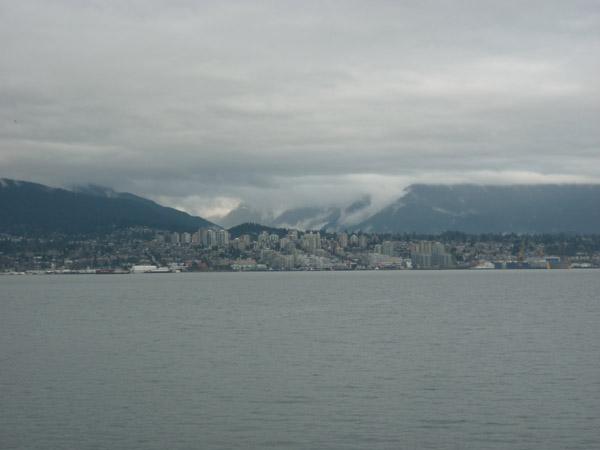
With that little morsel of light on my soul, I got myself ready for next few days of intensive ecocity theorizing.
o~O~o~O~o~O~o~O~
Part II coming soon:
– Jamming on the International Ecocity Framework and Standards initiative
– The Neighborhood Energy Utility
– How to build an Ecocity University

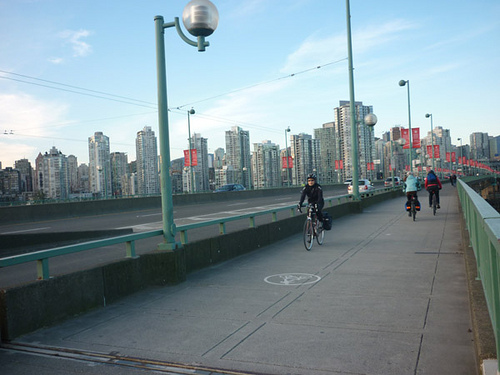






Sven, you are really a master at integrating the written word with the visuals, resulting in our being able to almost viscerally understand the material. Thank you for another excellent piece and for adding to our collective understanding
Thanks Barb. I’ve found that when talking about things has dry and unsexy as city planning it helps to have a story and visuals. Ultimately, it’s all about people and their relationships to each other and their natural environment. It’s always good to ask “why do we do what we do?” before going into all the technical, left-brain stuff about how to do it.
Thank you so much, Sven, for accepting the responsibility to teach us why, and how, to build better lives through building eco-cities.
Pam
Thanks for stopping by, Pam, and taking the time to read. It’s a long road ahead, but we need to take this trip one step at a time, literally.
[…] what happened so far: Carless in Vancouver, Part 1: Boots on the Ground Carless in Vancouver, Part 2: Going for the high-hanging […]